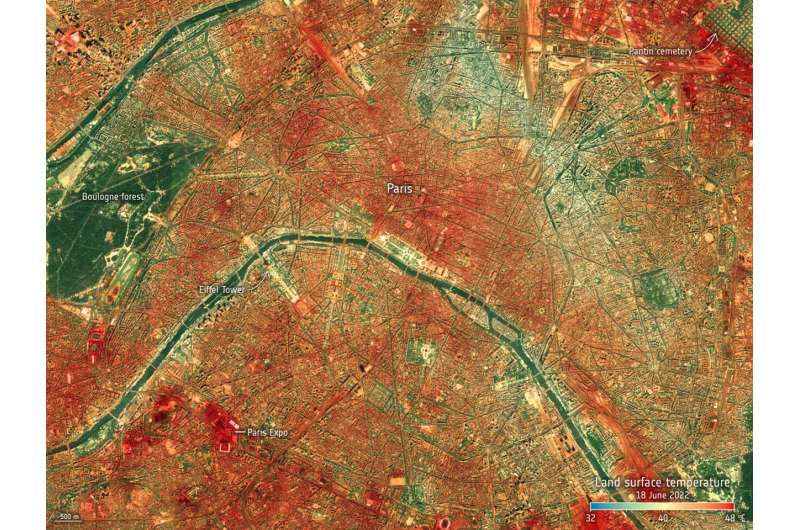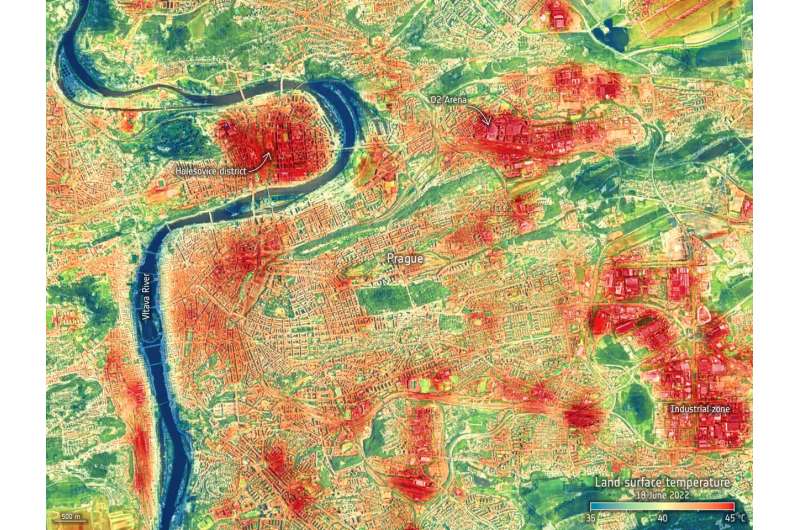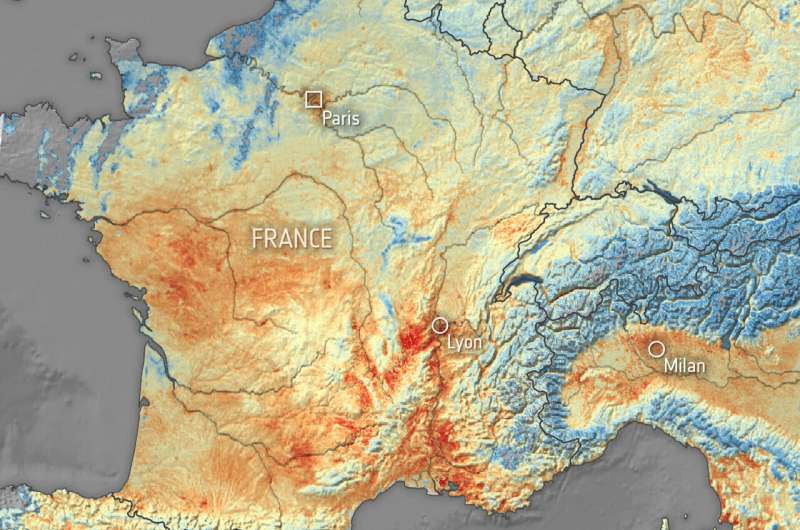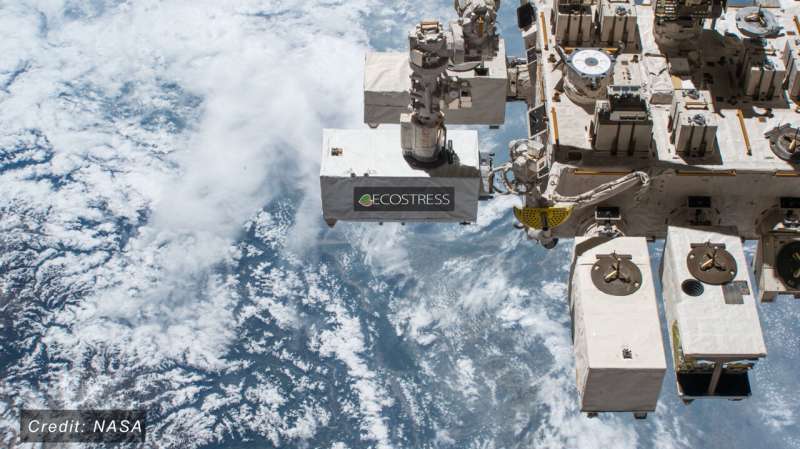City heat extremes captured by instrument on the ISS

With air temperatures in excess of 10°C above the average for the time of year in parts of Europe, the United States and Asia, June 2022 has gone down as a record breaker. The fear is that these extreme early-season heatwaves are a taste of what could soon be the norm as climate change continues to take hold. For those in cities, the heat dissipates slower creating "urban heat islands," which make everyday life even more of a struggle.
An instrument, carried on the International Space Station, has captured the recent land-surface temperature extremes for some European cities, including Milan, Paris and Prague.
While these images offer little direct consolation for those suffering the burden of heat, they are helping by providing geospatial information to mitigate effects of heatwaves in the future through planning and managing water resources more efficiently.
For ESA, this particular instrument, which is called ECOSTRESS and owned by NASA's Jet Propulsion Laboratory (JPL), is important because it is helping in the development of a new Copernicus Sentinel satellite: the Land Surface Temperature Monitoring (LSTM) mission.
ESA is using the instrument to simulate the data that will eventually be returned by LSTM, which will provide systematic measurements of the temperature of the land surface, promising to be a game-changer for urban planners and farmers, for example.
Both space agencies are working together closely to make most use out of the two missions in a synergetic manner, including JPL's Surface Biology and Geology mission.

In fact, this collaboration is part of the overall objective of working together to lead a response to climate change—the NASA–ESA Framework Agreement for a Strategic Partnership in Earth System Science, which was signed recently.
The world has already warmed by about 1.1°C since the industrial era began and temperatures are set to keep rising unless greenhouse gas emissions are cut drastically.
Heatwaves appear to be increasing in frequency, intensity and duration because of human-induced climate change. June has been a harsh reminder of what is in store.
For several consecutive days in mid-June, many European cities endured air temperatures above 40°C.
Europe wasn't alone in its suffering this June. Tokyo in Japan notched up air temperatures above 35°C for five days in a row, making it the worst documented run of hot weather in June since records started in 1875. In the U.S., by 15 June, nearly one-third of the population was under some form of heat advisory.
The city images here show land-surface temperatures in Milan, Paris and Prague on 18 June in the early afternoon. For comparison the wider view of land-surface temperature across much of Europe below was taken by the Copernicus Sentinel-3 mission on 18 June, slightly earlier in the day.

The difference, however, is not really about the time of day the image was captured, but the importance of the difference in resolution. The ECOSTRESS images, offer far more detail than that from Sentinel-3—and it's this level of detail that will be attained by the new Copernicus LSTM mission, increasing the spatial resolution by a factor 400.
It is worth noting the difference between air temperature and land-surface temperature. Air temperature, given in our daily weather forecasts, is a measure of how hot the air is above the ground. Land-surface temperature instead is a measure of how hot the actual surface would feel to the touch.
Scientists monitor land-surface temperature because the warmth rising from Earth's surface influences weather and climate patterns. These measurements are also particularly important for farmers evaluating how much water their crops need and for urban planners looking to improve heat mitigating strategies, for example.
Extreme heat can be fatal. City dwellers are particularly susceptible because of the urban heat island effect, which increases the heat compared to the countryside where there is more vegetation.
Urban heat islands occur when natural land cover, such as vegetation, is replaced with dense concentrations of pavement, buildings, and other surfaces that absorb and retain heat.
The images above clearly show how hot the surface was in built-up parts of the cities, but they also clearly show the cooling effect of parks, vegetation and water.

Glynn Hulley, from JPL, said, "ECOSTRESS continues to image the impact of extreme heat in cities around the world including the recent heatwaves that shattered records in both Europe and the U.S. These data can be used to identify hotspots, vulnerable regions, and assess the cooling impacts of heat mitigation approaches."
ESA's Benjamin Koetz said, "The instrument is proving extremely valuable in helping us develop and prepare for Europe's LSTM mission, which will offer land-surface temperature data at a similar resolution, of 50 m.
"Envisaged to be launched towards the end of the decade, the main goal of LSTM is to respond to the needs of European farmers to make agricultural production more sustainable as water shortages increase, thereby helping farmers get more 'crop for the drop.'
"However, it is evident that we are all experiencing more heatwaves and LSTM will also be important for helping authorities address the serious issue of urban heat islands by monitoring city microclimates."
Provided by European Space Agency





















